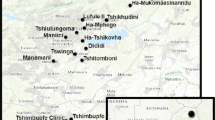Abstract
Purpose: To assess the effectiveness of a pilot integrated pest management (IPM) program in controlling cockroaches in an apartment complex, without pesticide sprays.
Methods: A brief educational session and booklet were provided to tenants. Non- spray pest control methods were promoted. A telephone questionnaire was administered at pre-and post-test to assess knowledge, attitudes and practices of tenants. Cockroach counts were determined at pre- and post-test. The type and frequency of pesticide treatments were monitored prior to and during the 8-month IPM demonstration period.
Results: Overall, the knowledge, attitudes and practices of tenants improved after the IPM intervention. There was a significant shift in treatment type away from spraying towards more paste/gel treatments. Cockroach levels tended to be lower after IPM compared with before.
Conclusion: A brief educational session and booklet can influence building residents to accept and comply with an IPM program. This program can be effective in controlling cockroaches without pesticide sprays.
Résumé
Objectif: évaluer l’efficacité d’un programme pilote intégré de lutte antiparasitaire visant à éliminer les coquerelles dans un immeuble d’appartements sans recourir aux vaporisations de pesticides.
Méthodes: les locataires ont reçu une petite séance d’éducation et une brochure. On a encouragé les méthodes de lutte sans vaporisation de pesticides. Avant et après le test, ils ont répondu à un questionnaire par téléphone pour évaluer leurs connaissances, leurs attitudes et leurs pratiques. Un décompte des coquerelles a été fait avant et après le test. Le type et la fréquence des traitements de pesticides ont été surveillés avant la période de démonstration du programme intégré de lutte antiparasitaire ainsi que pendant les huit mois de sa durée.
Résultats: dans l’ensemble, les connaissances, les attitudes et les pratiques des locataires se sont améliorées après l’application du programme. On a constaté un changement très net dans le type de traitements avec moins de vaporisations et plus d’applications de gels et de pâtes. Le nombre de coquerelles a eu tendance à baisser après l’application du programme.
Conclusion: une brève séance d’éducation avec distribution d’une brochure peut amener les résidents d’un immeuble à accepter d’appliquer un programme intégré de lutte antiparasitaire. Ce type de programme peut effectivement lutter contre les coquerelles sans avoir à utiliser les vaporisations de pesticides.
Similar content being viewed by others
References
Olkowski W, Daar S, Olkowski H. Common Sense Pest Control: Least Toxic Solutions for your Home, Garden, Pets and Community. Newton, Connecticut: Taunton Press, 1991.
Bio-Integral Resource Center. Managing Cockroaches with Least-Toxic Methods. Berkeley, California, 1991.
Robinson WH, Zungoli PA. Integrated control program for German cockroaches (Dicyoptera: Blattellidae) in multiple unit dwellings. J Econ Entomol 1985;87:595–98.
Campbell M, Dwyer J, Goettler F, et al. Cockroach Control in the Housing Sector: Evaluation of an Integrated Pest Management (IPM) Demonstration Project for an Apartment Complex. Toronto: Toronto Public Health, 1998.
Sly T, Lee J, Lee MZ, et al. A Survey of Knowledge, Behaviour and Attitudes Among Residents of the City of Toronto with respect to Pesticides. Toronto: Toronto Public Health, 1991.
Campbell M, Dwyer J, Ruf, F. Cockroach control in the housing sector through integrated pest management (IPM). Env Health Rev 1997;41(1):8–13.
Miller DM, Koehler PG, Patterson RS. Use of German cockroach fecal extract to enhance toxic bait performance in the presence of alternative food sources. J Econ Entomol 1997;90(2):483–87.
Schal C, Hamilton RL. Integrated suppression of syanthropic cockroaches. Annu Rev Entomol 1990;35:521–51.
Farmer BH, Robinson WH. Harbourage limitation as a component of German cockroach management program. Proc Entomol Soc Wash 1984;86(2):269–73.
Author information
Authors and Affiliations
Corresponding author
Additional information
This project was made possible through core funding from the Ontario Ministry of Health for the Public Health Research, Education and Development (PHRED) program. Project-specific funding was provided by the Canada Mortgage and Housing Corporation (CMHC) and the Ontario Ministry of the Environment (OMOE).
Rights and permissions
About this article
Cite this article
Campbell, M.E., Dwyer, J.J., Goettler, F. et al. A Program to Reduce Pesticide Spraying in the Indoor Environment: Evaluation of the ‘Roach Coach’ Project. Can J Public Health 90, 277–281 (1999). https://doi.org/10.1007/BF03404131
Received:
Accepted:
Published:
Issue Date:
DOI: https://doi.org/10.1007/BF03404131




